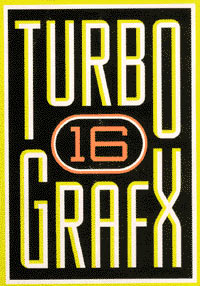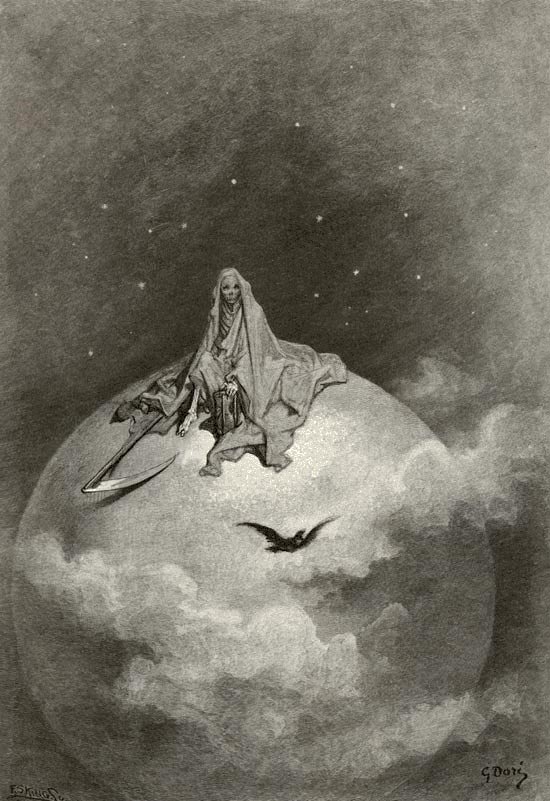|
Demon's World
''Demon's World'' is a 1989 run and gun arcade video game originally developed by Toaplan and published in Japan by Taito and in North America by Catalina Games.Translationby Shmuplations. ).Translationby Gamengai. ). In the game, players assume the role of two ghost hunters to fight against several ghosts and monsters that were unleashed upon Earth by the titular demon king. Initially launched for the arcades, the title was then ported to the PC Engine Super CD-ROM² by NEC Avenue and published exclusively in Japan on 26 February 1993, featuring various additions and changes compared with the original release. ''Demon's World'' was met with mixed response from critics, who reviewed the PC Engine Super CD-ROM² version as an import title despite being exclusive to Japan. As of 2019, the rights to the title is owned by Tatsujin, a company founded in 2017 by former Toaplan member Masahiro Yuge, and now-affiliate of Japanese arcade manufacturer exA-Arcadia alongside many ... [...More Info...] [...Related Items...] OR: [Wikipedia] [Google] [Baidu] |
Toaplan
was a Japanese video game developer based in Tokyo responsible for the creation of a wide array of Shoot 'em up#Scrolling shooters, scrolling shooters and other arcade games. The company was founded in 1979 but its gaming division was established in 1984 by former Orca and Crux employees, who wanted to make games, after both companies declared bankruptcy. Their first shoot 'em up game, ''Tiger-Heli'' (1985) on arcades, was a success and helped establish Toaplan as a leading producer of shooting games throughout the 1980s and 1990s that would continue to characterize their output. Though initially exclusive to arcades, they expanded with the Sega Genesis in 1990. The company ceased development of shoot 'em up projects before declaring bankruptcy in 1994. Several offshoot developers such as Tamsoft, Eighting, Cave (company), CAVE, Gazelle (software company), Gazelle, and Takumi Corporation were formed prior to and after the closure, while former members later joined to other stud ... [...More Info...] [...Related Items...] OR: [Wikipedia] [Google] [Baidu] |
TurboGrafx-16
The TurboGrafx-16, known as the outside North America, is a home video game console designed by Hudson Soft and sold by NEC, NEC Home Electronics. It was the first console marketed in the fourth generation of video game consoles, fourth generation, commonly known as the 16-bit era, though the console has an 8-bit central processing unit (CPU) coupled with a 16-bit graphics processor. It was released in Japan in 1987 and in North America in 1989. In Europe, the console is known as the PC Engine, after the Japanese model was imported and distributed in the United Kingdom and France from 1988. In Japan, the system was launched as a competitor to the Nintendo Entertainment System, Famicom, but the delayed United States release meant that it ended up competing with the Sega Genesis and later the Super Nintendo Entertainment System, Super NES. The console has an 8-bit CPU and a dual 16-bit graphics processing unit (GPU) chipset consisting of a video display controller (VDC) and video ... [...More Info...] [...Related Items...] OR: [Wikipedia] [Google] [Baidu] |
Bomb
A bomb is an explosive weapon that uses the Exothermic process, exothermic reaction of an explosive material to provide an extremely sudden and violent release of energy. Detonations inflict damage principally through ground- and atmosphere-transmitted mechanical stress (mechanics), stress, the impact and penetration of pressure-driven projectiles, pressure damage, and explosion-generated effects. Bombs have been utilized since the 11th century starting in East Asia. The term bomb is not usually applied to explosive devices used for civilian purposes such as construction or mining, although the people using the devices may sometimes refer to them as a "bomb". The military use of the term "bomb", or more specifically aerial bomb action, typically refers to airdropped, unpowered explosive weapons most commonly used by air forces and naval aviation. Other military explosive weapons not classified as "bombs" include shell (projectile), shells, depth charges (used in water), or lan ... [...More Info...] [...Related Items...] OR: [Wikipedia] [Google] [Baidu] |
Media Franchise
A media franchise, also known as a multimedia franchise, is a collection of related media in which several derivative works have been produced from an original creative work of fiction, such as a film, a work of literature, a television program or a video game. Bob Iger, chief executive of the Walt Disney Company, defined the word ''franchise'' as “something that creates value across multiple businesses and across multiple territories over a long period of time.” Transmedia franchise A media franchise often consists of cross-marketing across more than one medium. For the owners, the goal of increasing profit through diversity can extend the commercial profitability of the franchise and create strong feelings of identity and ownership in its consumers. Those large groups of dedicated consumers create the franchise's fandom, which is the community of fans that indulge in many of its mediums and are committed to interacting with and keeping up with other consumers. Large franch ... [...More Info...] [...Related Items...] OR: [Wikipedia] [Google] [Baidu] |
Ghostbusters (franchise)
The ''Ghostbusters'' franchise consists of American supernatural horror-comedies, based on an original concept created by Dan Aykroyd and Harold Ramis in 1984. The plot ostensibly centers around a group of eccentric New York City scientists who investigate, encounter, and capture ghosts, paranormal manifestations, demigods and demons. The franchise expanded with licensed action figures, books, comic books, video games, television series, theme park attractions, and other original ''Ghostbusters''-themed products. Setting Technology The Ghostbusters use a specialized set of equipment in the 1984 film, and all subsequent ''Ghostbusters'' fiction includes similar equipment to aid in the capture and containment of ghosts. In addition to the main technology used in the series, a script draft for ''Ghostbusters III'' includes the Ghostbusters developing a machine to transport themselves to an alternate Manhattan to save New York. Transportation Films Original series ''Ghostbu ... [...More Info...] [...Related Items...] OR: [Wikipedia] [Google] [Baidu] |
Player Character
A player character (also known as a playable character or PC) is a fictional character in a video game or tabletop role-playing game whose actions are controlled by a player rather than the rules of the game. The characters that are not controlled by a player are called non-player characters (NPCs). The actions of non-player characters are typically handled by the game itself in video games, or according to rules followed by a gamemaster refereeing tabletop role-playing games. The player character functions as a fictional, alternate body for the player controlling the character. Video games typically have one player character for each person playing the game. Some games, such as multiplayer online battle arena, hero shooter, and fighting games, offer a group of player characters for the player to choose from, allowing the player to control one of them at a time. Where more than one player character is available, the characters may have distinctive abilities and differing styles ... [...More Info...] [...Related Items...] OR: [Wikipedia] [Google] [Baidu] |
Boss (video Gaming)
In video games, a boss is a significant computer-controlled opponent. A fight with a boss character is commonly referred to as a boss battle or boss fight. Bosses are generally far stronger than other opponents the player has faced up to that point. Boss battles are generally seen at climax points of particular sections of games, such as at the end of a level or stage or guarding a specific objective. A miniboss is a boss weaker or less significant than the main boss in the same area or level, though usually more powerful than the standard opponents and often fought alongside them. A superboss (sometimes 'secret' or 'hidden' boss) is generally much more powerful than the bosses encountered as part of the main game's plot and is often an optional encounter. A final boss is often the main antagonist of a game's story and the defeat of that character usually provides a positive conclusion to the game. A boss rush is a stage where the player faces multiple previous bosses again ... [...More Info...] [...Related Items...] OR: [Wikipedia] [Google] [Baidu] |
Side-scrolling Video Game
'' A side-scrolling video game (alternatively side-scroller), is a game viewed from a side-view camera angle where the screen follows the player as they move left or right. The jump from single-screen or flip-screen graphics to scrolling graphics during the golden age of arcade games was a pivotal leap in game design, comparable to the move to 3D graphics during the fifth generation.IGN Presents the History of SEGA: Coming Home Hardware support of smooth scrolling backgrounds is built into many games and some game consoles and home computers, including [...More Info...] [...Related Items...] OR: [Wikipedia] [Google] [Baidu] |
Horror Fiction
Horror is a genre of fiction which is intended to frighten, scare, or disgust. Horror is often divided into the sub-genres of psychological horror and supernatural horror, which is in the realm of speculative fiction. Literary historian J. A. Cuddon, in 1984, defined the horror story as "a piece of fiction in prose of variable length... which shocks, or even frightens the reader, or perhaps induces a feeling of repulsion or loathing". Horror intends to create an eerie and frightening atmosphere for the reader. Often the central menace of a work of horror fiction can be interpreted as a metaphor for larger fears of a society. Prevalent elements of the genre include ghosts, demons, vampires, werewolves, ghouls, the Devil, witches, monsters, extraterrestrials, dystopian and post-apocalyptic worlds, serial killers, cannibalism, cults, dark magic, satanism, the macabre, gore and torture. History Before 1000 The horror genre has ancient origins, with roots in folklore ... [...More Info...] [...Related Items...] OR: [Wikipedia] [Google] [Baidu] |
ARC Demon's World (Horror Story)
ARC may refer to: Business * Aircraft Radio Corporation, a major avionics manufacturer from the 1920s to the '50s * Airlines Reporting Corporation, an airline-owned company that provides ticket distribution, reporting, and settlement services * Airport Regions Conference, a European organization of major airports * Amalgamated Roadstone Corporation, a British stone quarrying company * American Record Company (1904–1908, re-activated 1979), one of two United States record labels by this name * American Record Corporation (1929–1938), a United States record label also known as American Record Company * ARC (American Recording Company) (1978-present), a vanity label for Earth, Wind & Fire * ARC Document Solutions, a company based in California, formerly American Reprographics Company * Amey Roadstone Construction, a former British construction company * Aqaba Railway Corporation, a freight railway in Jordan * ARC/Architectural Resources Cambridge, Inc., Cambridge, Massach ... [...More Info...] [...Related Items...] OR: [Wikipedia] [Google] [Baidu] |






